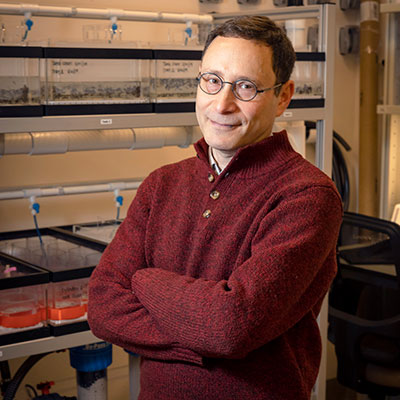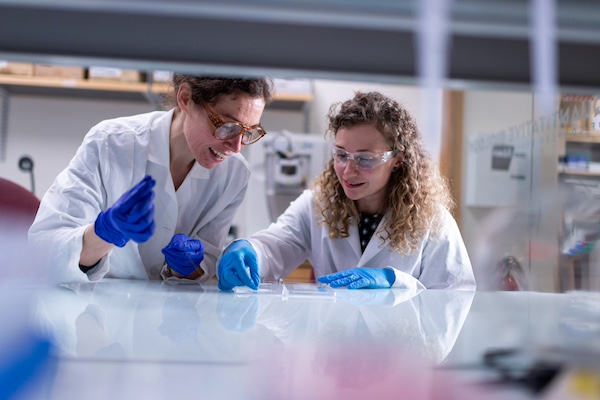Research in the Newmark/Issigonis laboratory uses the tools of molecular cell biology and functional genomics to address several major biological problems for which planarians serve as excellent models. Learn more about our research >



We use freshwater planarians as models to study regeneration, germ cells, and to help us understand parasitic flatworms.
Research in the Newmark/Issigonis laboratory uses the tools of molecular cell biology and functional genomics to address several major biological problems for which planarians serve as excellent models. Learn more about our research >


Research in the laboratory seeks to understand why some animals can regenerate missing or damaged organs. To this end we study flatworms known as planarians that can regenerate entire new animals from tiny fragments of the body; this amazing ability relies on stem cells that the animal maintains throughout life. By studying the planarian we hope to understand how stem cells are regulated to produce missing tissues and organs in the context of a whole organism. Insights gained from our basic research on planarian biology have also led us to study parasitic flatworms, like schistosomes and tapeworms. As we learn more about how schistosomes infect their hosts and reproduce inside them, we hope to devise new strategies for controlling these devastating parasites that infect hundreds of millions of people in the developing world.
The proper specification and differentiation of germ cells ensure the continuity of all sexually reproducing species. Studies across a wide range of organisms have revealed key, conserved features in germ cell development, including the importance of localized niches and somatically derived systemic cues. Planarian flatworms are well known for their remarkable regenerative capabilities and can even regenerate new germ cells from fragments of adult tissue that lack reproductive organs. This amazing plasticity is derived from pluripotent stem cells that planarians maintain throughout life. By leveraging the planarian S. mediterranea as a model organism, we aim to gain deeper insights into the critical signals that regulate germ cell specification, development, and regeneration. Our research also extends to the study of parasitic flatworms with the goal of developing new strategies to control these parasites, which impact millions of people globally.


We're matching all gifts! That's right — double your impact with a 2x match. Your gift will go even further to help scientists improve human health. Don't wait! Match dollars are only available for a limited time.
GIVE NOW